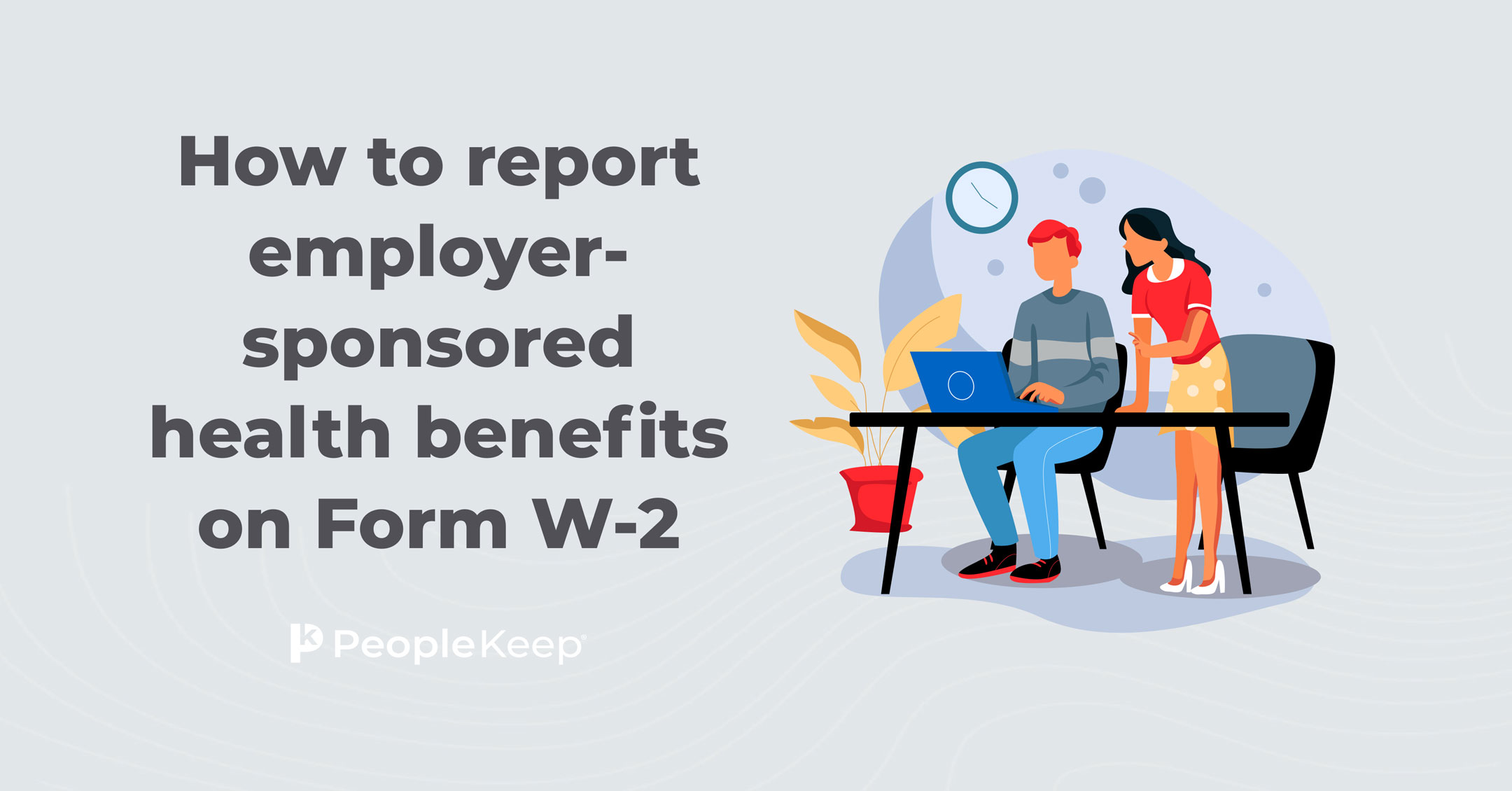How to calculate FTEs to determine ALE status
By Elizabeth Walker on November 7, 2025 at 7:45 AM
As a business owner, it’s vital to confirm if the Affordable Care Act’s (ACA) employer mandate applies to you. Knowing the number of full-time equivalent employees (FTEs) your company has allows you to determine if the federal government considers your business an applicable large employer (ALE). If you’re an ALE, you must offer health insurance to your employees or pay a penalty.
You can avoid tax penalties by offering affordable health coverage that meets minimum essential coverage (MEC) and provides minimum value to at least 95% of full-time employees and their dependents. But first, you’ll need to calculate the number of FTEs at your company to see if the mandate applies to your business.
In this blog post, you’ll learn:
- The steps for determining your organization’s full-time equivalent count to see if you qualify as an ALE under the ACA.
- The criteria ALEs must meet and the tax penalties for noncompliance.
- The health benefit options for ALEs that can satisfy the employer mandate.
What is an ALE?
An ALE is a business that has 50 or more FTEs. According to the ACA, ALEs must offer health insurance policies to at least 95% of their full-time employees and their dependents, or they may be subject to a tax penalty. Under the employer mandate, a dependent is an employee’s child or individual in the employee’s care who hasn’t turned 26.
Your health plan must meet the following requirements to satisfy the employer mandate:
- It must provide MEC.
- The IRS must consider the coverage affordable.
- The employee should not have to pay more than 9.96% of their household income for a self-only plan in 20261.
- The plan must provide minimum value.
- The plan must cover at least 60% of the cost of covered healthcare services for a standard population. This is the actuarial value of bronze-tier plans on the individual market.
ALEs must also complete IRS forms 1094-C and 1095-C. These forms describe the type of healthcare you provided to meet the employer shared responsibility provisions (ESPR). It’s best to get help from your financial advisor to prevent tax filing errors.
You can determine your ALE status by calculating your total average FTEs during the prior year. If your business had fewer than 50 FTEs in the previous calendar year, the IRS doesn’t consider you an ALE for the current year.
While smaller companies aren’t subject to the employer mandate or the tax penalties, they should still provide health benefits to their employees to support their well-being and increase retention.
What are the tax penalties?
You’ll only trigger the penalties if you’re an ALE and at least one full-time worker buys health coverage on the Health Insurance Marketplace and uses premium tax credits to help pay for it.
The two penalties for ALEs, also known as employer shared-responsibility payments (ESRP), are as follows:
- The Section 4980H(a) penalty
- This applies when an ALE doesn't offer MEC to at least 95% of its full-time employees in any given calendar month. To trigger it, at least one full-time employee must receive a premium tax credit to help pay for coverage through an ACA marketplace.
- This penalty is $278.33 per month (or $3,340 annualized) in 2026. You must multiply it by the number of full-time employees (minus the first 30 full-time employees, not FTEs).
- The Section 4980H(b) penalty
- Suppose an ALE offers coverage to at least 95% of full-time employees. But, each full-time employee didn’t receive an affordable coverage option that met MEC and provided minimum value. In this case, the Section 4980H(b) penalty is applicable. To trigger it, at least one full-time employee must decline coverage from their employer and enroll in subsidized coverage on an ACA marketplace.
- In 2026, this penalty is $417.50 per month (or $5,010 annualized) for each full-time employee who receives subsidized coverage on an ACA marketplace . The penalty can’t exceed the amount the employer would owe under the 4980H(a) penalty if that penalty is greater than $1.
What is an FTE employee?
Employers who offer employee benefits often wonder what the difference is between a full-time employee and a full-time equivalent employee.
Here’s how full-time employees and full-time equivalent employees compare:
- The ACA considers an individual employee full-time if they average at least 30 hours per week or at least 130 hours per month.
- Under the ACA, the IRS classifies any individual who works a minimum of thirty hours per week as full-time. Many business owners consider an employee with a 40-hour workweek a full-time employee. However, when considering health insurance, you must count those working 30 or more hours as full-time employees.
- A full-time equivalent is a unit of measurement. It’s the total number of full-time hours worked by both full- and part-time employees at an organization.
- When calculating FTEs, you must count the hours of employees who are considered part-time and work fewer than 30 hours per week.
A business owner can calculate how many full-time employees they have and the number of part-time hours that count as full-time equivalent employees to make up their total FTE count.
What is the difference between FTE and headcount?
An FTE count and headcount are different methods of measuring business size, but they serve different purposes.
A headcount refers to the total number of people employed at your organization or within a specific department. Depending on how many part-time workers you have, you’ll likely have a higher overall headcount than FTEs.
Your headcount is essential for various reasons, including:
- Tracking your employee turnover.
- Calculating the productivity of your workforce.
- Budgeting for labor costs.
- Comparing the size of your entire workforce to that of your industry competitors.
Unlike FTEs, you determine your headcount regardless of how many full-time or part-time employees you have or the number of hours worked per day per week.
How do you calculate monthly FTEs?
To determine if your company is an ALE, you must include all FTEs in your total number.
Let’s start with part-time workers:
- Add the average number of hours worked each month by all part-time workers in the previous year. This number should also include hours worked by your seasonal or temporary workers.
- Divide the total by 120. This gives you the number of FTEs in your part-time workforce.
- The ACA defines one FTE as a block of 120 hours worked by part-time employees each month2. This differs from what the ACA defines as a full-time employee, which is a person who works an average of 130 hours per month.
Add the number of full-time employees (anyone who works 30 or more hours each week) to your FTE count of part-time employees to get your total number of FTEs at your organization.
To look at it another way, check out the formula below:
(Total part-time hours in a month / 120) + the number of full-time employees = Number of FTEs for the month
According to the IRS, you should round the result down to a whole number.
Here’s an example calculation for an organization with 30 full-time employees and 10 part-time employees:
Let’s assume that each part-time employee works 20 hours per week. There are 4.3 weeks per month on average. This equals 86 working hours per month for part-time employees.
|
86 hours x 10 part-time employees = 860 hours (860 / 120) + 30 full-time employees = Number of FTEs 7.17 + 30 = 37.17 FTEs Because this isn’t a whole number, you can round down to 37. |
You don’t need to include the following employees in your FTE calculations:
- A sole proprietor
- A partner in a partnership
- A 2% or more S corporation shareholder
- Independent contractors
Remember, your business isn’t an ALE if you employed fewer than 50 FTEs on average during the previous calendar year.
The number of employees you have may change from one year to the next. So, it's crucial to calculate your FTEs each calendar year to determine your ALE status and avoid penalties.
What is the seasonal worker exemption?
As mentioned above, you must count seasonal or temporary employees in your FTE calculations. The IRS defines these individuals as employees working on a seasonal basis who you hire into a position for an annual employment period of less than six months.
If you have seasonal workers whose hours cause your total number of employees to exceed 50 or more, you may qualify for the seasonal worker exemption3.
You qualify for the seasonal employee exemption if you meet both of the following criteria:
- Your workforce exceeds 50 full-time workers (including FTEs) for 120 days or fewer during the calendar year, AND
- The employees in excess of 50 employed during the 120-day period of time are seasonal workers.
Why are FTE calculations necessary for employers?
Besides needing to know if their FTE count means they have to comply with the employer mandate, knowing how many FTEs you have is vital for your company’s metrics. Tracking your employees’ workloads and output between your full-time employees and FTEs can help you evaluate actual performance and make necessary improvements.
Some state and federal employment laws will only apply to your organization if you have a certain number of FTEs. This is similar to how specific labor laws only apply to full-time employees, but not to part-time workers.
Calculate your employees' average hours per week and your FTEs yearly to maintain an accurate picture of your business.
What are the health insurance options for ALEs?
If you qualify as an ALE, you must offer comprehensive health coverage that satisfies the employer mandate. Luckily, there are a few options available to you.
Traditional group health insurance
Traditional group health insurance is a common way to offer your employees health coverage. A type of employer-sponsored health plan, business owners choose and offer a fully-insured group health plan to their employees and eligible dependents at a reduced rate. Typically, employers split the cost of group plan premiums with their enrolled employees.
You can buy a group health policy through an insurance carrier, a licensed agent, or a broker. Because you’re an ALE, you’ll likely be able to access lower premiums and meet the minimum participation requirements. Insurers often require at least 70% of your employees to enroll in the plan.
There are also self-insured group plans. However, since employers are paying out medical claims themselves, it can be too expensive and risky for many small businesses.
While it’s a familiar option for most employees, group health insurance can have downsides, including the following:
- Depending on your workforce demographics and location, the coverage may not meet the unique needs of every employee.
- You may have limited plan options, especially if you’re a remote company with multi-state employees.
- Fully-insured group plans can come with high premiums and steep annual rate hikes for employers and employees.
- In 2025, the average annual premiums were approximately $9,325 for self-only coverage ($777/month) and $26,993 for family coverage ($2,249/month). Employers contributed an average of $20,143, which is almost 75% of the average annual premium, toward their employees’ family coverage3.
Health reimbursement arrangements (HRAs)
One of the most flexible options for ALEs is a health reimbursement arrangement (HRA). An HRA is a tax-free health benefit employers use to reimburse employees for individual health insurance premiums and qualified out-of-pocket medical expenses. Employers often leverage stand-alone HRAs as an alternative to group health insurance policies, as this is the only type of HRA that doesn’t work alongside group coverage.
With an HRA, you set a monthly allowance that your employees can spend on healthcare costs. Once employees make an approved purchase, you reimburse them tax-free up to their allowance amount.
Unlike traditional group plans, HRAs have no annual rate hikes, participation requirements, or minimum contribution limits. This makes them ideal for every organization, regardless of its budget, size, or location. Better yet, HRA reimbursements are tax-deductible and free of payroll taxes for employers. They’re also income-tax-free for employees.
The following two HRAs can work for ALEs:
- The individual coverage HRA (ICHRA). The ICHRA is for organizations of all sizes. This type of HRA has no maximum contribution limits, and you can vary allowances and eligibility requirements based on age, family status, and 11 employee classes. For example, you could limit the benefit to full-time employees only or offer a smaller allowance amount to part-time employees. If you design your ICHRA with an affordable allowance, the benefit can satisfy the ACA’s employer mandate.
- Only employees with a qualifying form of individual health insurance can participate in the ICHRA. They can buy a qualified health plan on a public health exchange, such as the federal Health Insurance Marketplace or a state-based marketplace, or a private exchange.
- The group coverage HRA (GCHRA). If you’re already offering traditional group coverage, you can supplement it with a GCHRA. Also known as an integrated HRA, this benefit is only for employers who have a group health plan. It allows you to reimburse your employees tax-free for out-of-pocket medical costs, like deductibles and coinsurance, that their group plan doesn’t fully cover. However, premiums are ineligible expenses. Similar to the ICHRA, there are no employer contribution limits, and you can customize the benefit using seven employee classes.
- Only employees enrolled in your company’s group health plan can participate in the GCHRA.
Conclusion
The ACA helps to ensure that as many people as possible have affordable health insurance. While the law doesn’t require all businesses to offer health insurance to their workers, employers with 50 or more FTEs are ALEs and must follow the employer mandate. Thankfully, business owners can easily confirm their ALE status. Proper FTE calculations can help you meet employer mandate regulations, submit proper reporting, and avoid penalties.
If you are a new ALE looking to offer a compliant health benefit, PeopleKeep by Remodel Health can help. We specialize in helping small and medium-sized businesses provide personalized HRAs that are compliant and budget-friendly. If your organization is a larger ALE that requires more robust support, our parent company, Remodel Health, and its ICHRA+® administration solution are perfectly suited for your needs.
This article was originally published on January 21, 2022. It was last updated on November 7, 2025.
1. Affordability threshold for 2026
2. IRS - Questions and answers on employer shared responsibility provisions under the ACA
Check out more resources
See these related articles

HRAs and W-2 annual reporting
Learn about HRA W-2 annual reporting requirements. Understand what employers need to include on employees' W-2 forms for HRA compliance.

Does an HRA work with Medicaid?
Find out if an HRA can be used with Medicaid. Learn how HRA reimbursements work for employees enrolled in Medicaid and what limitations may apply.

How to report employer-sponsored health benefits on Form W-2
Unsure how to report employer-sponsored health benefits on your Form W-2? This blog has clear explanations and examples to help you navigate the process.



